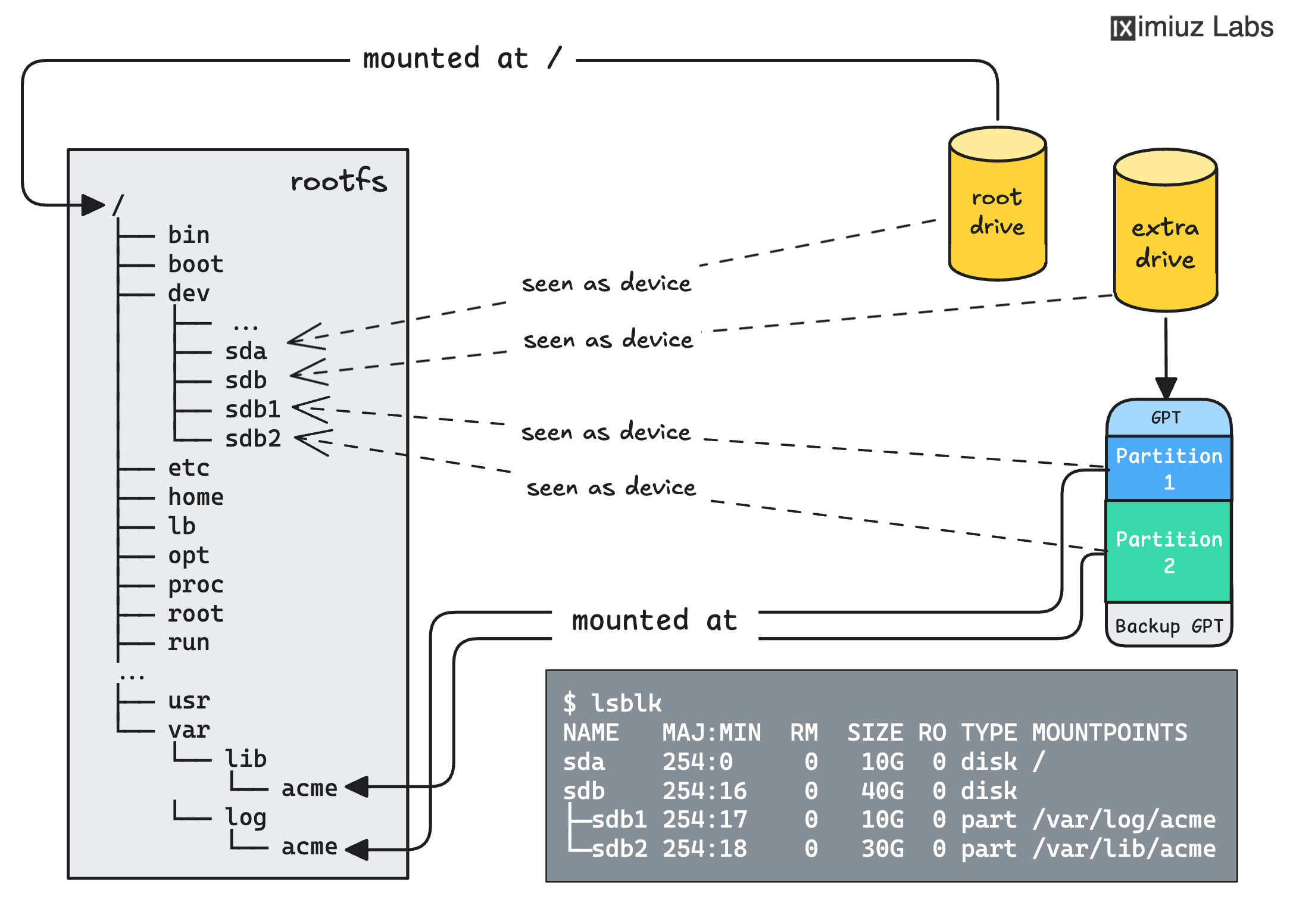This challenge builds upon the basic GPT partitioning challenge by introducing multiple partitions with different filesystems.
Real-world servers often need their storage divided for different purposes: fast, journaled filesystems like ext4 for logs and system data, and advanced filesystems like btrfs for application data that benefits from features like snapshots, compression, and copy-on-write semantics.

Device names on the diagram are deliberately generic.
Your mission is to:
- Create a GUID partition table (GPT) on the blank 40 GiB drive.
- Add a first partition of exactly 10 GiB for log storage.
- Add a second partition using the remaining ~30 GiB for data storage.
- Format the first partition as
ext4and mount it at/var/log/acme. - Format the second partition as
btrfsand mount it at/var/lib/acme. - Write test files:
service.login the logs partition anddataset.txtin the data partition.
Hint: Finding the blank drive 💡
Use lsblk or fdisk -l to identify the unpartitioned drive. Look for a device with no existing partitions or filesystems.
Hint: Partition sizing in parted 💡
When creating partitions with parted, you can specify exact sizes like 0% 10GiB for the first partition, then 10GiB 100% for the second. The tool handles the math automatically.
Hint: Kernel partition updates 💡
After creating partitions, you need to make the kernel aware of the new partition table before formatting.
The best tool for this job is partx -u.
Hint: Installing btrfs tools 💡
You'll need btrfs-progs to format and manage btrfs filesystems:
sudo apt-get update
sudo apt-get install btrfs-progs
Hint: Creating mount directories 💡
Don't forget to create the mount point directories before trying to mount the partitions.
Level up your Server Side game — Join 20,000 engineers who receive insightful learning materials straight to their inbox